Exiting Peckham Rye station, you’re not aware of it, but standing on the platform you can see a mansard roof with ornamental railings silhouetted against the sky like a French chateau. Designed in the 1860s by Charles Henry Driver, architect of Sao Paolo’s Estacao da Luz, it once covered a vaulted waiting room which, after an intermediate existence as a billiard hall, was closed to the public in 1962. In short, it is just the sort of hidden space to tickle the fancies of impresarios-at-large Artangel, who have made it the site of the first UK installation by American artist Sarah Sze.
It’s not Sze’s first commission for a travel hub: her multimedia sculpture ‘Shorter than the Day’ – a fragile sphere spangled with photographs of the New York sky at different times of day – was installed at LaGuardia airport last year. ‘Metronome’ belongs to the same Timekeeper series, the difference being that its images are moving. While Sze’s New York timekeeper appears to stop time, her London one – a hollow hemisphere dotted with blank pages on to which scraps of video are projected – appears to accelerate it. There are a lot of flames – candles, a roaring fire, a volcano and an orange sun rising (or setting in reverse) like a fireball – interleaved with brief glimpses of vegetation: combustion trumps photosynthesis in what feels like a doom loop. Animals appear trapped somewhere in between, an ostrich running endlessly on the spot and a grounded pigeon feebly flapping its wings. Framed by the bricked-up arches of the waiting-room windows, the swirling colours projected on to the surrounding walls are as seductive as a Chagall stained-glass window but more unnerving. The age of the smartphone, says Sze, has unleashed ‘an extreme hurricane’ of imagery – and knowing that pictures snapped by visitors to her installation will be joining an estimated five billion smartphone photos taken a day is not reassuring.
One reason Peckham Rye needed such a big waiting room was that it was a junction for the Crystal Palace in Sydenham before that popular attraction went up in smoke in 1936. By coincidence, the original Crystal Palace built for the Great Exhibition in Hyde Park in 1851 is the subject of the latest commission by Art on the Underground for the disused platform at Gloucester Road Tube station. Monster Chetwynd’s Pond Life: Albertopolis and the Lily celebrates gardener-turned-architect Joseph Paxton, the pioneer of biomimicry architecture who based the revolutionary modular structure of the Crystal Palace’s glass roof on the radial spokes and flexible ribs of the leaf of the Victoria Amazonica lily he successfully cultivated at Chatsworth. Chetwynd, who has a soft spot for pond life, has taken the lily-pad as the inspiration for a row of five commemorative reliefs featuring frogs, tadpoles, water boatmen, dragonfly larvae, turtles and newts, all apparently helping with the manufacture of Paxton’s fabulous prefab modules. There is also a salamander sheltering under a lily-pad parasol. Context is provided in a lo-tech film in which Chetwynd plays a Fact Hungry Witch flying in on a broomstick – with a Socialist Goblin riding pillion – to question experts on the history of Paxton’s masterpiece. Asked whether the expansion of the British Empire can be separated from Victorian technological innovation, Antoine Picon, Harvard professor of the history of architecture and technology, answers firmly: ‘No.’ A bonus was that the surplus from the Great Exhibition’s six million ticket sales went into founding Albertopolis’s museums.
Your average Tube traveller doesn’t share the Fact Hungry Witch’s curiosity; on the morning of the unveiling the only person I saw looking at Pond Life was a tourist. Nobody looks at anything on their home patch: when you see someone looking about them with curiosity, chances are – if they’re not a burglar – they’re a tourist or an artist.
The Japanese-born artist Jiro Osuga has spent much of his life looking at parts of the urban fabric the rest of us ignore and giving them a surreal twist in paint. For his latest exhibition, Departures, he has transformed 160m² of Flowers’ east-London gallery into an airport. Everything is recreated at scale: check-in desks, departure gates, travellator, café, duty-free shop, baggage-reclaim carousels. The giveaway is the smell of oil paint and the presence among the travellers of some very odd customers: a robot asleep across three seats, a Roman in a toga descending an escalator, two octopuses pushing a luggage trolley, a group of ancient Egyptians awaiting boarding. Friedrich’s ‘Wanderer above the Sea of Fog’ gazes out across the tarmac; Ford Madox Brown’s forlorn couple from ‘The Last of England’ sit glumly awaiting embarcation (see below).
The departures board lists flights for Ithaka, Xanadu, Gomorrah, Paradise, Hades and Nowhere. Among the wines and spirits in the duty-free shop there’s a small bottle labelled ‘DRINK ME’. One suspects the artist of having sampled it. It isn’t full.
Got something to add? Join the discussion and comment below.
Get 10 issues for just $10
Subscribe to The Spectator Australia today for the next 10 magazine issues, plus full online access, for just $10.
You might disagree with half of it, but you’ll enjoy reading all of it. Try your first month for free, then just $2 a week for the remainder of your first year.

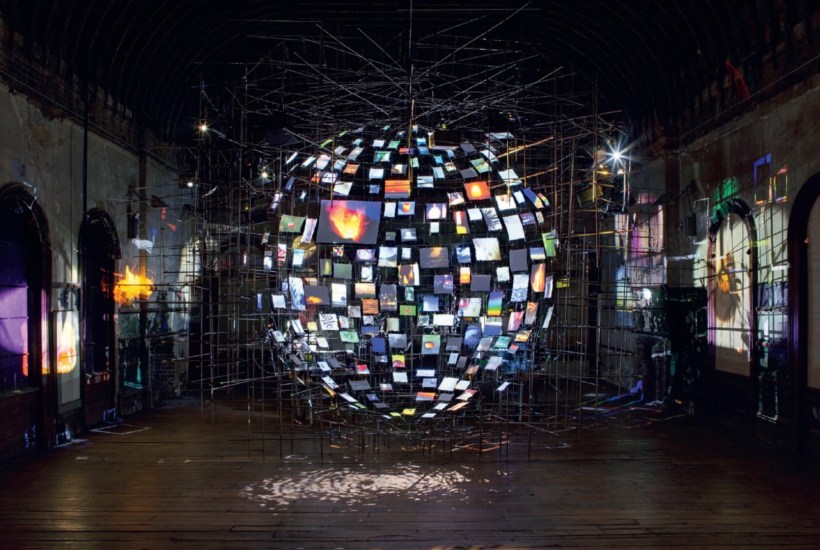


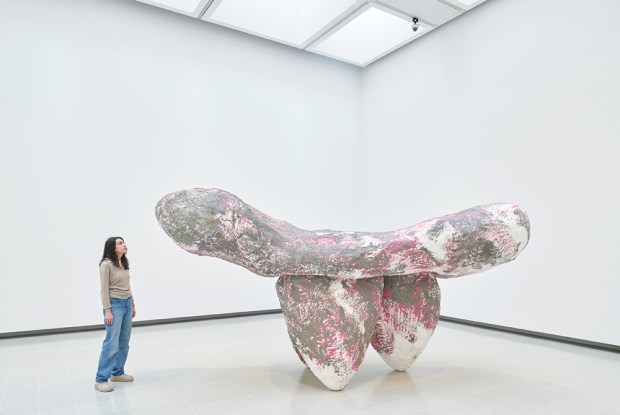
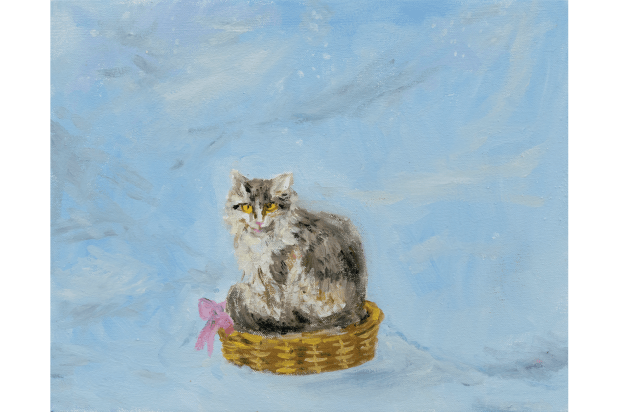
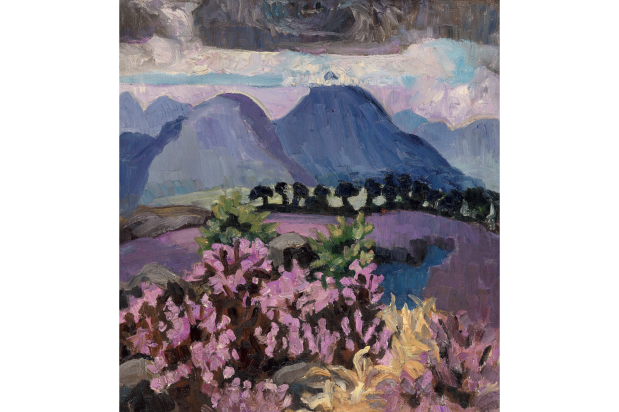
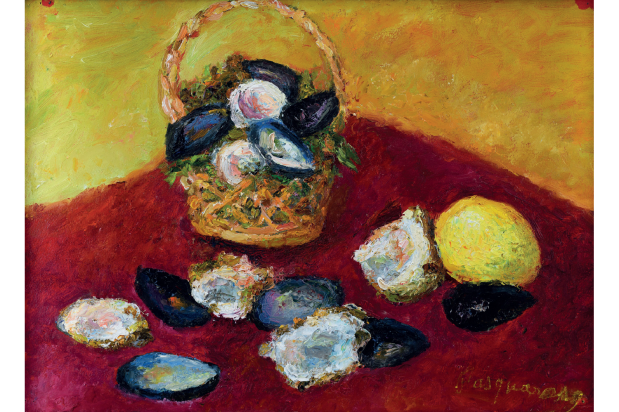






Comments
Don't miss out
Join the conversation with other Spectator Australia readers. Subscribe to leave a comment.
SUBSCRIBEAlready a subscriber? Log in